Smart year-end tax moves for businesses

As the year winds down, it’s a great time for small business owners to start thinking about taxes. Taking some proactive steps now can make a significant difference in your tax bill and set your business up for a successful year ahead.
Let’s explore some strategies that can help you maximize deductions and be financially prepared for what’s next.
Deferring income and accelerating deductions
One common strategy is to defer income to the next tax year while accelerating deductible expenses into the current year. By doing so, you lower your taxable income, reducing the amount you owe when tax season arrives. If your cash flow permits, you might consider postponing sending out invoices until January so the income isn’t recognized until 2025. Likewise, you can pay deductible expenses like rent, insurance premiums, employee bonuses, or utility bills in advance.
However, if you expect to earn more next year or anticipate changes in tax rates, it might be more beneficial to reverse this approach. In such cases, bringing income into the current year and postponing deductions to the next year can help offset higher taxes down the road. To accelerate income, consider offering discounts to encourage early payments or completing sales before year-end. Defer expenses by delaying purchases until after the new year.
It’s important to note that the effectiveness of these strategies depends on whether you use cash-basis or accrual accounting. Under the cash-basis method, income and expenses are recognized when cash changes hands. This makes it relatively straightforward to accelerate or defer income and expenses.
The accrual method recognizes income when services are provided or goods are delivered, regardless of when payment is received. Expenses are deducted when they are incurred, not necessarily when they are paid. To accelerate income under accrual accounting, you need to deliver products or complete services before year-end. Receiving payment before the end of the year doesn’t affect income recognition. Similarly, prepaying expenses like rent or insurance won’t accelerate deductions under accrual accounting. However, you can still accelerate some deductions by incurring expenses earlier. For instance, if you plan to purchase equipment or other deductible items in the near future, making those purchases before year-end allows you to deduct them in 2024.
Ensure estimated tax payments are on time
To avoid penalties, make your last estimated tax payment for the year by the due date. The fourth-quarter payment is due on January 15, 2025. Even if you’ve fallen behind on estimated tax payments for previous quarters, catching up by the January 15 deadline can help reduce potential penalties and interest. While it may not eliminate penalties for earlier underpayments, making the full payment now can prevent additional charges from accruing.
Maximize the Qualified Business Income (QBI) deduction
The QBI deduction allows eligible business owners to deduct up to 20% of their qualified business income. Eligible taxpayers include individuals with income from a pass-through entity, including sole proprietorships, partnerships, and S corporations.
For 2024, the QBI deduction begins to phase out when taxable income exceeds $383,900 for married couples filing jointly or $191,950 for single filers. Once your taxable income surpasses these thresholds, limitations based on W2 wages paid and the unadjusted basis immediately after acquisition (UBIA) come into effect.
If your business is in a specified service field – like health, law, accounting, consulting, athletics, financial services, or brokerage services – the QBI deduction phases out entirely once taxable income reaches certain levels. For married couples filing jointly, the deduction is fully phased out at $483,900, and for single filers at $241,950.
Understanding W2 wages and UBIA limitations
If your business isn’t in a specialized service field, the deduction doesn’t phase out entirely once you reach the income threshold, but it is limited to the lesser of:
- 20% of your QBI, or
- The greater of 50% of:
- W2 wages paid, or
- 25% of W2 wages paid plus 2.5% of the UBIA of qualified property.
This means the amount of W2 wages your business pays and the value of its qualified property directly impact your allowable deduction.
Strategies to maximize the QBI deduction
One way to maximize the deduction is to keep your taxable income below the phase-out thresholds. This can be achieved by deferring income, accelerating deductible expenses, and contributing to tax-deferred retirement plans.
Once taxable income exceeds the threshold, however, you’ll likely want to increase W2 wages. Many pass-through business owners are inclined to minimize W2 wages to reduce payroll taxes, but this strategy can significantly limit your QBI deduction. In many cases, the tax savings from a higher QBI deduction can outweigh the additional payroll taxes incurred by increasing W2 wages.
As the year-end approaches, it’s wise to review where you are with respect to W2 wages and qualified business income. Many experts recommend keeping wages around 2/7 of your QBI to maximize the QBI deduction in a manner that outweighs the additional payroll taxes. If you find that you haven’t paid sufficient wages to maximize the deduction, you may want to provide bonuses before the end of the year. This increases the wage base used to calculate the deduction, which can lead to substantial tax savings.
Please note that the rules surrounding the QBI deduction are intricate and vary based on individual circumstances. Given this complexity, it’s crucial to consult with a CPA. They can provide personalized advice to ensure you’re maximizing the deduction while complying with all tax laws and regulations.
Capitalize on the Section 179 deduction and bonus depreciation
If you’re planning to purchase equipment or software for your business in the near future, consider moving those purchases up to 2024 to maximize your tax benefits.
Section 179
Section 179 lets you deduct the full purchase price of qualifying equipment and software in the year it’s placed in service. For 2024, the deduction limit is $1.22 million, with an investment ceiling of $3.05 million. This applies to most new depreciable property like machinery, equipment, off-the-shelf software, and certain nonresidential building improvements, including roofs, HVAC, fire protection, and security systems.
Even if you acquire the qualifying property late in the year, you can still deduct the full amount for 2024. However, Section 179 deductions cannot exceed your business’s taxable income for the year. Any excess is carried forward to future years.
Bonus depreciation
Bonus depreciation allows you to deduct 60% of the cost of eligible property in 2024 and does not have a phase-out threshold, but it’s scheduled to decrease to 40% in 2025. Unlike Section 179, bonus depreciation does not have an annual deduction limit and can create a net operating loss since it’s not limited by taxable income.
Bonus depreciation applies to a broad range of property, including some assets not eligible for Section 179, such as used machinery, equipment, or vehicles acquired from an unrelated party, and certain assets with a recovery period of 20 years or more.
Maximizing both deductions
You can use both Section 179 and bonus depreciation in the same year but not on the same asset (you can’t “double-dip”). Generally, it’s advantageous to maximize your Section 179 deduction first because it allows you to deduct 100% of the cost of the asset in the year it’s placed in service, compared to the 60% deduction provided by bonus depreciation in 2024.
If you plan to use both deductions, it’s essential to review all qualifying assets and determine which ones qualify for Section 179 but not bonus depreciation and vice versa. This ensures compliance and maximizes your tax savings.
For instance, let’s say your company invests in new equipment and property improvements totaling $2 million:
- $1 million for new machinery and equipment.
- $800,000 for used equipment purchased from an unrelated party.
- $200,000 for nonresidential HVAC and roof upgrades.
You’ll want to apply the Section 179 deduction to the nonresidential real property improvements because they don’t qualify for bonus depreciation. Then, use the remaining Section 179 deduction on the new equipment that qualifies for both deductions. Finally, you’ll apply bonus depreciation to assets not covered by Section 179.
Keep in mind that state tax laws may differ from federal laws regarding Section 179 and bonus depreciation, so it’s important to consider state tax implications when choosing between the two deductions.
To ensure you get the most out of the two deductions, consult with a tax professional. They’ll help you identify which assets qualify for each deduction and develop a strategy to maximize tax savings.
Use the de minimis safe harbor election
The de minimis safe harbor election allows businesses to immediately expense lower-cost tangible property and materials and supplies that would otherwise need to be capitalized and depreciated over time. This reduces the need to track and depreciate numerous small-dollar assets over several years.
If your business has an applicable financial statement (AFS), you can deduct up to $5,000 per item or invoice. An AFS is typically an audited financial statement prepared in accordance with generally accepted accounting principles (GAAP). Larger businesses or those with regulatory requirements usually have an AFS. For instance, let’s say your business purchases 20 office chairs at $400 each. Since each chair costs less than $5,000, you can deduct the total cost of $8,000 immediately as long as you attach a statement titled “Section 1.263(a)-1(f) de minimis safe harbor election” to your tax return.
If you don’t have an AFS, you can still take advantage of the de minimis safe harbor, but the deduction limit is $2,500 per item or invoice.
To use the election, you must have written accounting procedures in place at the beginning of the tax year that specify amounts paid for property under the relevant dollar threshold will be expensed for accounting purposes. If you have an AFS, these procedures must be in writing. For businesses without an AFS, while written procedures are not required by the IRS, it’s best practice to document them in writing to ensure consistency and compliance. In all cases, you must apply these procedures consistently in your books and records throughout the taxable year.
Review inventory levels and accounts receivable
Taking the time to review your inventory levels before year-end can uncover valuable opportunities to reduce your taxable income. Start by conducting a thorough physical inventory count and compare the results with your financial records. Identify any discrepancies, such as excess, obsolete, or damaged stock. Writing off this inventory as a loss not only cleans up your balance sheet but also reduces your taxable income for the current year.
In addition to inventory, it’s wise to examine your accounts receivable. Analyze your aging report to identify any outstanding debts that are unlikely to be collected. Writing off bad debts as uncollectible can provide a deduction, further lowering your taxable income. This improves the accuracy of your financial statements and gives you a clearer picture of your cash flow heading into the new year.
Plan for retirement contributions
By maximizing both employer and personal contributions to retirement accounts, you can lower your tax liability and enhance retirement savings for yourself and your employees.
Employers can contribute the following amounts to employee’s retirement plans:
- SEP IRA Contributions: employers can contribute up to 25% of an eligible employee’s compensation or $69,000 for 2024, whichever is less. These contributions are tax-deductible for the business and can be made up until the tax filing deadline, including extensions.
- 401(k) Contributions: the contribution limit for 2024 is $23,000 for employee contributions and $69,000 for combined employee and employer contributions.
By contributing to these plans, employers can reduce their taxable income and also enhance employee satisfaction and retention by offering valuable retirement benefits.
Consider charitable contributions
Making charitable donations through your business is a powerful way to support the community while also reaping tax benefits. Contributions must be made to organizations recognized by the IRS as tax-exempt 501(c)(3) organizations. Donations can be in the form of cash, property, or inventory, but each type of donation has specific rules for valuation and deduction.
Deduction limits:
- C Corporations: can generally deduct charitable contributions up to 10% of their taxable income. Any excess contributions can often be carried forward for up to five years.
- Pass-through entities: the deduction passes through to the individual owners, who can claim it on their personal tax returns. For individuals, the deduction limit is typically 60% of adjusted gross income (AGI) for cash contributions, though lower limits may apply for non-cash contributions.
Donating appreciated assets like stocks or real estate held for more than one year can offer additional tax benefits. You can deduct the fair market value of the asset and avoid capital gains tax on the appreciation.
Documentation requirements
For any cash donation, maintain a bank record or a written communication from the charity indicating the name of the organization, the date, and the amount of the contribution. For any single contribution of $250 or more, obtain a written acknowledgment from the charity. For property donations over $500, you must file Form 8283 with your tax return. For items over $5,000, a qualified appraisal may be required.
Plan ahead with tailored advice
Taking proactive steps before the year ends can make a significant difference in your tax liability and overall financial health. While the strategies discussed can provide substantial benefits, the complexities of tax laws mean that there’s no one-size-fits-all solution. To truly maximize your tax savings and ensure that you’re in full compliance with all regulations, contact our office for personalized advice.
We can tailor strategies to your unique business circumstances, helping you make informed decisions that align with your financial goals.



